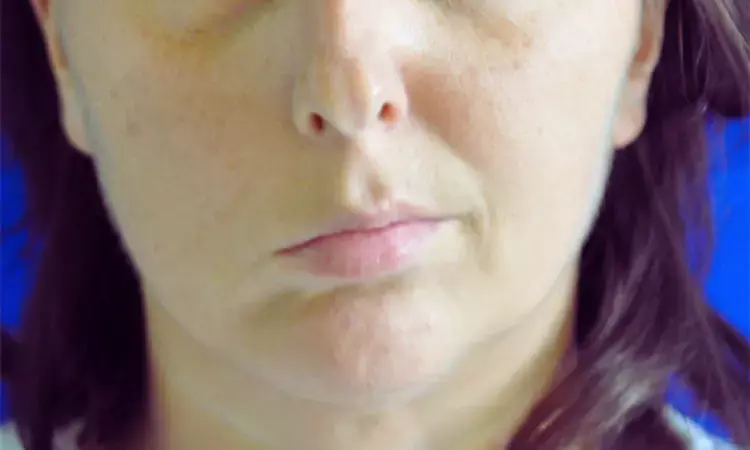- Home
- Medical news & Guidelines
- Anesthesiology
- Cardiology and CTVS
- Critical Care
- Dentistry
- Dermatology
- Diabetes and Endocrinology
- ENT
- Gastroenterology
- Medicine
- Nephrology
- Neurology
- Obstretics-Gynaecology
- Oncology
- Ophthalmology
- Orthopaedics
- Pediatrics-Neonatology
- Psychiatry
- Pulmonology
- Radiology
- Surgery
- Urology
- Laboratory Medicine
- Diet
- Nursing
- Paramedical
- Physiotherapy
- Health news
- Fact Check
- Bone Health Fact Check
- Brain Health Fact Check
- Cancer Related Fact Check
- Child Care Fact Check
- Dental and oral health fact check
- Diabetes and metabolic health fact check
- Diet and Nutrition Fact Check
- Eye and ENT Care Fact Check
- Fitness fact check
- Gut health fact check
- Heart health fact check
- Kidney health fact check
- Medical education fact check
- Men's health fact check
- Respiratory fact check
- Skin and hair care fact check
- Vaccine and Immunization fact check
- Women's health fact check
- AYUSH
- State News
- Andaman and Nicobar Islands
- Andhra Pradesh
- Arunachal Pradesh
- Assam
- Bihar
- Chandigarh
- Chattisgarh
- Dadra and Nagar Haveli
- Daman and Diu
- Delhi
- Goa
- Gujarat
- Haryana
- Himachal Pradesh
- Jammu & Kashmir
- Jharkhand
- Karnataka
- Kerala
- Ladakh
- Lakshadweep
- Madhya Pradesh
- Maharashtra
- Manipur
- Meghalaya
- Mizoram
- Nagaland
- Odisha
- Puducherry
- Punjab
- Rajasthan
- Sikkim
- Tamil Nadu
- Telangana
- Tripura
- Uttar Pradesh
- Uttrakhand
- West Bengal
- Medical Education
- Industry
Free Flap Surgery for Facial Paralysis: Insights from Research on Choosing the Best Option

Italy: Researchers have found in new research that free flap surgery with dual innervation for long-term paralysis of the lower third of the face can achieve comparable results using either latissimus dorsi or gracilis free flaps. Further, the optimal choice depends on individual cases, considering the surgeon's expertise, the patient’s preferences, and overall expectations.
The findings were published online in the European Archives of Oto-Rhino-Laryngology on March 7, 2025.
Facial paralysis, particularly when affecting the lower third of the face, can significantly impact a person’s ability to express emotions and perform essential functions like speaking and eating. For patients with long-standing paralysis, reconstructive procedures such as free-flap surgery with double innervation have emerged as a promising approach to restoring facial movement. This technique involves transplanting muscle tissue, either from the latissimus dorsi or gracilis, to the affected area, while utilizing dual nerve inputs to enhance muscle activation.
Against the above background, Rita De Berardinis, Department of Otorhinolaryngology and Head and Neck Surgery, European Institute of Oncology, IRCCS, Via Ripamonti, Milan, Italy, and colleagues aimed to present an updated review of the literature on lower-third facial reanimation in adults, focusing on restoring voluntary and spontaneous smiles through dual innervation free-flap surgery.
For this purpose, the researchers conducted a comprehensive literature review by searching electronic databases, including MEDLINE, Embase, Scopus, and the Cochrane Library, to identify all relevant studies.
The key findings of the study were as follows:
- The review analyzed 12 retrospective studies involving 147 patients.
- Five studies focused on the latissimus dorsi double innervation technique, including 42 patients.
- Seven studies examined the gracilis free flap with double innervation in 105 patients.
- The findings provided an overview of smile recovery after this surgical procedure.
- Half of the studies reported that patients achieved full smile restoration.
The study confirms that free-flap surgery with dual innervation is an effective approach to restore facial movement in long-term lower-third facial paralysis. Both latissimus dorsi and gracilis free flaps provide comparable results, making them viable treatment options.
"The choice between the two depends on various factors, including the surgeon’s expertise, the complexity of the case, and the patient’s preferences and expectations," the authors wrote.
"Personalized treatment planning remains crucial to achieving the best outcomes. As surgical techniques continue to evolve, this approach offers hope for improved facial reanimation and better quality of life for affected individuals," they concluded.
Reference:
De Berardinis, R., Santoro, V., Tagliabue, M. et al. Free-flap surgery with double innervation for smiling restoration in long standing facial paralysis: a literature review. Eur Arch Otorhinolaryngol (2025). https://doi.org/10.1007/s00405-025-09287-y
Dr Kamal Kant Kohli-MBBS, DTCD- a chest specialist with more than 30 years of practice and a flair for writing clinical articles, Dr Kamal Kant Kohli joined Medical Dialogues as a Chief Editor of Medical News. Besides writing articles, as an editor, he proofreads and verifies all the medical content published on Medical Dialogues including those coming from journals, studies,medical conferences,guidelines etc. Email: drkohli@medicaldialogues.in. Contact no. 011-43720751


